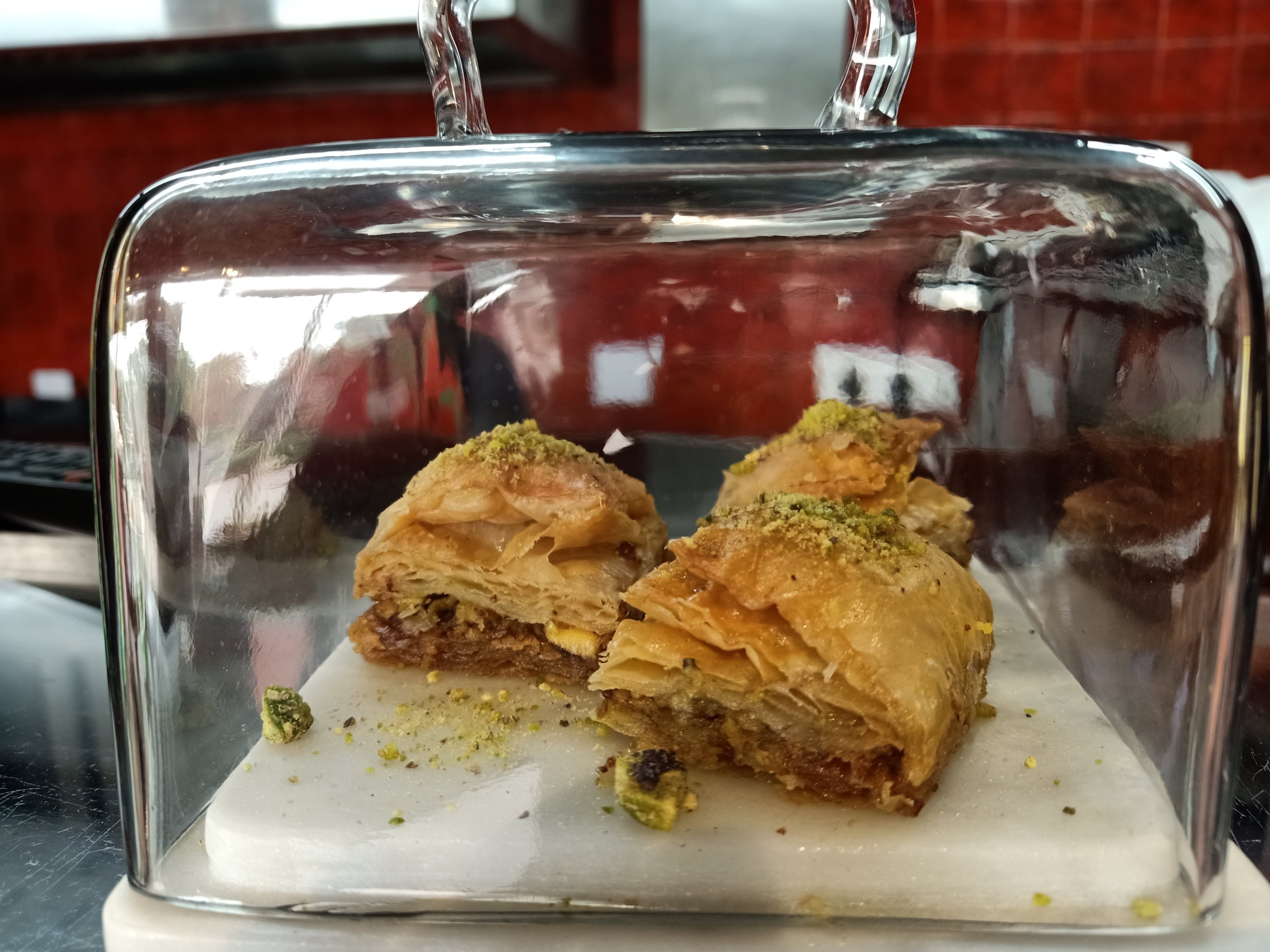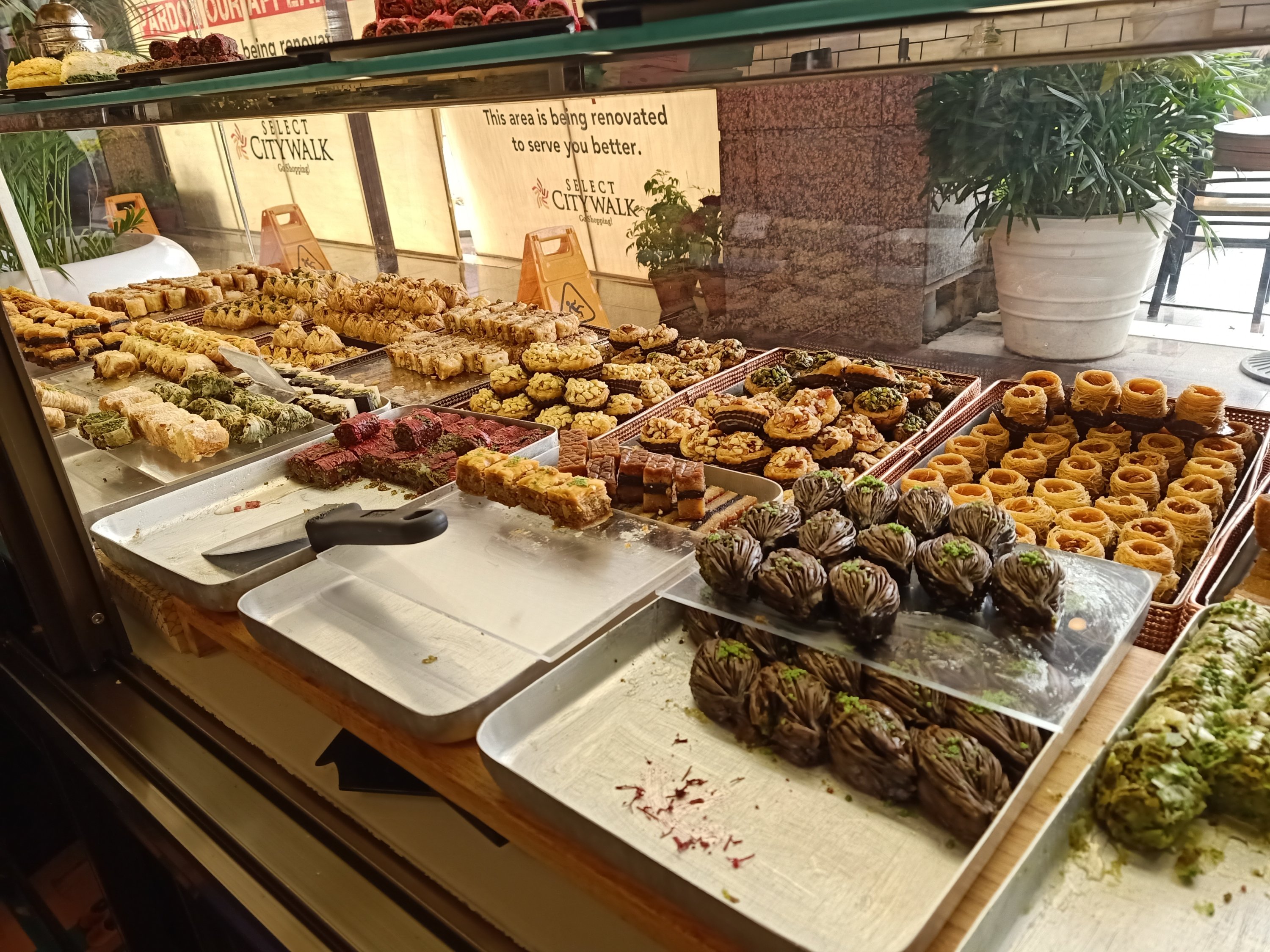© Turkuvaz Haberleşme ve Yayıncılık 2024
The popularity of Turkish cuisine has an exceptional place around the world, but Turkish baklava has become a relatively new sensational delight everywhere. Despite being a traditional dessert, it is widely loved and has earned a place on the menus of many restaurants around the globe. However, when the sweet's unique method of preparation is considered, Turkey surely remains the best place to sample this heavenly delicacy.
Baklava is made from rich dough layered with a mixture of finely minced walnuts or pistachios and drenched in honey or sugar syrup. The dough is stretched into thin and transparent sheets. These sheets of phyllo are layered one on top of the other with minced walnuts or pistachios sprinkled between every layer. The nuts used in the sweet pastry are usually associated with the southeastern Turkish province of Gaziantep. The layers are also flavored with melted butter, as well. After the top layer of phyllo is placed, the baklava is cut into the desired size and shape. The most-preferred traditional version is generally cut in diagonal diamonds.
After baklava is baked in an oven and then left to cool, a syrup made of water and sugar or honey is poured over it. Remember: The standard Turkish baklava must not be burned or dark but should be a perfect yellow-golden tone.
Traditional Ottoman baklava has actually undergone various transformations. Today, modern-day baklava even has a vegan version for those who do not consume animal products. This vegan baklava looks identical in color and presentation to the typical non-vegan classic. Similarly, for diabetes patients, healthier versions of baklava are made using purple cabbage, raspberries, figs and other purple ingredients while making the dough. Between the layers of pastry, cream and peanuts are added as an alternative filling, and instead of the classic sugar-based syrup, fruits are used to moisten the flaky layers.
While there have always been certain products to which Turkey and Greece claim ownership, baklava was registered as a Turkish dessert by the European Commission in 2013 because of its rich heritage.
India is one of the countries where baklava has recently become a popular dessert, almost replacing the existing ones. Whether it is the holy Islamic month of Ramadan or religious holidays like Qurban Bayram, also known as Eid al-Adha, and Ramadan Bayram, also known as Eid al-Fitr, or the post-harvest festival Diwali, baklava shops see an overwhelming bustle of people in the country. Indian people also send baklava variety boxes to each other as a gift as it is seen as a family dessert.
Baklava has risen in popularity, especially in the Indian cities of Delhi, Hyderabad and Mumbai. It is gaining a prominent place next to the existing traditional Indian sweets such as Kaju katli, jalebi, gulab jamun and ladoo. The expansion of food chains in Delhi, Hyderabad, Mumbai, Amritsar and Kashmir has set new records, with restaurants receiving huge demand for baklava. Several food chains within the capital city serve an extensive Turkish menu to customers, including diverse types of Turkish baklava.
In Delhi’s Select City Mall, Ala-Turka and Oasis baklava shops make and sell special Diwali baklava. Speaking to Daily Sabah, the manager of Ala-Turka said that there is a huge demand for baklava during Diwali. According to restaurant staff, ingredients for making baklava are brought from the best suppliers or imported directly from Afghanistan. Several varieties of baklava, including pistachio, chocolate, cheese, hazelnut, almond, cinnamon and cardamon as well as star-shaped, diamond-shaped, ladyfinger and nest baklava, are some of the popular offerings in this shop. Ala-Turka was established in 2009 and is owned by Mustafa Sarjan, who is originally from Turkey and has lived in India for a long time. Ala-Turka has set up four more outlets within Delhi and Gurgaon. The restaurant makes 10-25 home deliveries of baklava per day with 150 to 200 customers visiting on a daily basis.

Oasis is another baklava shop that opened in 2006. Round, square and heart-shaped baklava and assorted special Diwali baklava are available here. The production unit is spread over an area of 60,000 square feet (5,574 square meters) and has eight outlets within Delhi and Amritsar. Serving both quality and quantity, these restaurants also generate employment for more than 300 people producing more than 2 tons of sweet pastry on a daily basis.
Gourmet Baklava in Hyderabad is yet another famous spot for quaint baklava varieties. It has a small delivery setup located in Banjara Hills in Hyderabad. Walnut, pistachio and cashew baklava, Turkish warbat, a kind of phyllo puff with a creamy filling, and Turkish cheese künefe are some of the popular desserts prepared by the chef Osman, who is originally from Turkey. The restaurant imports several items such as coffee directly from Turkey. Even the machinery used in the setup was imported from Turkey.

In Mumbai’s posh area, Hurrems Turkish Baklava confectionary is best known for making exquisite triangular-shaped (known as “havuç dilimi” in Turkish) baklava, which is served with ice cream.
That being the case, baklava remains the preferred choice of many people in India. Most interestingly, baklava is served at religious ceremonies by people of different religions here. Christians serve baklava on Christmas and Easter, Muslims eat it during Ramadan and other holidays; while Jews enjoy it as a Rosh Hashanah and Purim treat, Hindus serve it on Holi and Diwali.
